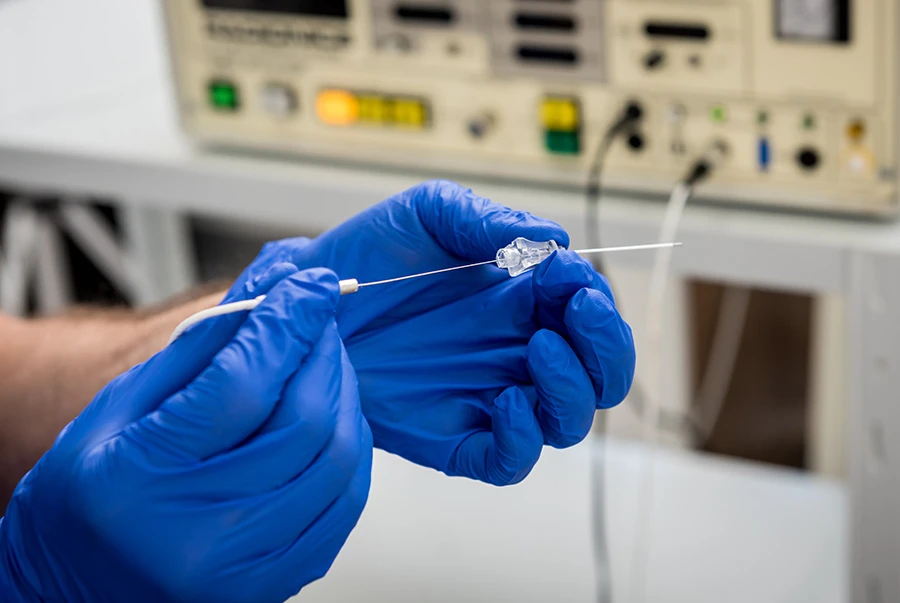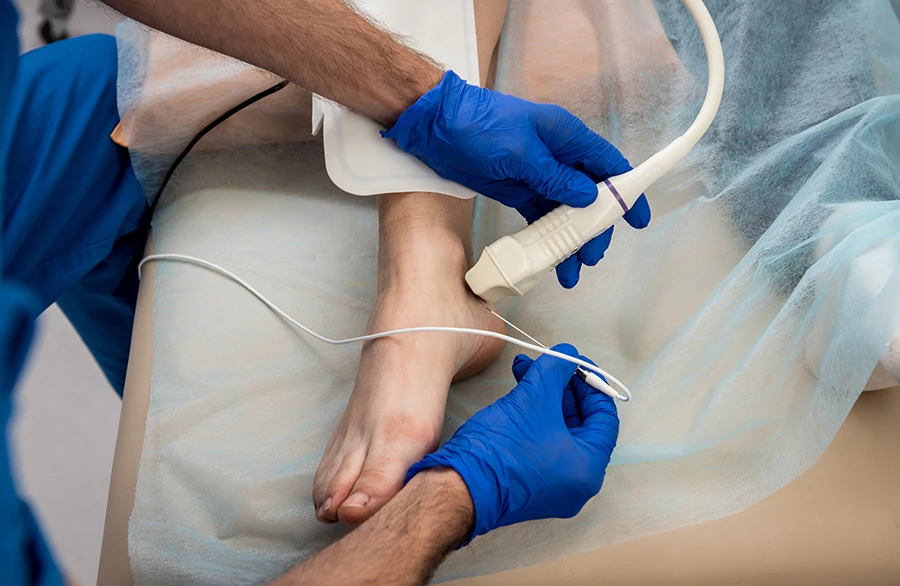
Services
Radiofrequency (RFA) Treatment in Singapore
Overview
Radiofrequency Treatment in Pain Management What is Radiofrequency Treatment? Benefits of Radiofrequency Treatment Who is a Good Candidate for RFA? How Does Radiofrequency Treatment Work? Conditions Treated with Radiofrequency Ablation What to Expect During the Procedure? Recovery and Aftercare Risks and Side Effects

Dr Thor Timothy
Consultant Pain Specialist & Anaesthesiologist
MBBS (S'pore), MMed (Anaesthesiology), FFPMANZCA (USA), EDPM (Europe),FAM (S'pore)
Radiofrequency Treatment in Pain Management
Chronic pain can be debilitating, affecting every aspect of a person's life. For those who have not found relief from traditional therapies like medications, physiotherapy, or even injections, radiofrequency treatment (or radiofrequency ablation) offers a minimally invasive, highly effective alternative.
What is Radiofrequency Treatment?
Radiofrequency treatment, also known as radiofrequency ablation (RFA), is a procedure that uses heat generated by radio waves to target specific nerves and temporarily disable their ability to transmit pain signals to the brain. It is primarily used for managing chronic pain that has not responded to conservative therapies.
During the procedure, a specialized needle is inserted near the nerve responsible for the pain. A small electrical current is passed through the needle, creating heat that ablates (or destroys) the nerve tissue. This disruption of the nerve's function results in significant and long-lasting pain relief for many patients.

Benefits of Radiofrequency Treatment
One of the biggest advantages of radiofrequency ablation is its ability to provide significant, lasting pain relief with minimal downtime. Other key benefits include:
Minimally invasive
Performed on an outpatient basis
Reduced reliance on opioids and other medications
Quick recovery time
Improvement in daily function and quality of life
High success rate in appropriately selected patients
Who is a Good Candidate for RFA?
Ideal candidates for radiofrequency treatment are patients who:
Have chronic pain (lasting six months or more)
Have not found sufficient relief from medications, physical therapy, or other conservative treatments
Have had a positive response to a diagnostic nerve block
Do not have bleeding disorders or infections at the treatment site
It is essential to conduct a thorough patient evaluation to ensure RFA is an appropriate and safe treatment option.

How Does Radiofrequency Treatment Work?
The goal of radiofrequency ablation is to disrupt nerve function. Nerves are responsible for sending pain signals from injured or affected areas of the body to the brain. When a nerve is ablated, it can no longer effectively transmit those signals.
Here's how the process typically works:
1.
Consultation and Evaluation: Before the procedure, patients undergo a thorough evaluation, which may include imaging studies (MRI, CT scans) and diagnostic nerve blocks to pinpoint the exact source of pain.
2.
Preparation: The procedure is typically performed under local anaesthesia with or without sedation. The patient is positioned comfortably depending on the targeted area.
3.
Needle Insertion: Using fluoroscopy (real-time X-ray guidance), the specialist inserts a needle close to the nerve that is believed to be the source of pain.
4.
Stimulation Testing: Electrical stimulation is performed to ensure the correct nerve is targeted. The patient may feel a tingling sensation or a mild discomfort during this phase.
5.
Ablation: Once confirmed, radiofrequency energy is delivered through the needle, heating the nerve tissue and effectively "shutting down" the pain signal.


Conditions Treated with Radiofrequency Ablation
Radiofrequency treatment is used to manage several chronic pain conditions, including:
Facet joint pain (common in the neck and lower back)
Sacroiliac joint pain
Arthritis-related joint pain
Peripheral nerve pain
Post-surgical pain
Complex Regional Pain Syndrome (CRPS)
Trigeminal neuralgia
What to Expect During the Procedure?
Radiofrequency ablation is generally well tolerated and typically takes 30 to 90 minutes, depending on the number of nerves treated.
Before the Procedure: Patients may be asked to stop certain medications and should arrange for transportation home.
During the Procedure: The area is numbed, and fluoroscopic guidance is used to place the needle accurately. Mild discomfort may be experienced during stimulation.
After the Procedure: Most patients are monitored for a short time before going home. Mild soreness at the site is common and usually resolves within a few days.


Recovery and Aftercare
Recovery from radiofrequency treatment is usually quick. Patients can typically resume normal activities within 24 to 72 hours, though strenuous activity should be avoided for a few days.
Pain Relief Timeline: Full relief may take up to two weeks to manifest, though some patients experience improvement sooner.
Duration of Relief: Relief typically lasts between 6 to 12 months, and in some cases, even longer. Repeat treatments are possible and often effective.
Follow-Up: Patients should return for a follow-up visit to assess progress and discuss ongoing care.
Risks and Side Effects
Like any medical procedure, radiofrequency ablation comes with potential risks and side effects, though they are rare and usually minor:
Temporary numbness or tingling
Mild swelling or bruising at the injection site
Soreness or discomfort post-procedure
Infection (rare)
Nerve damage (very rare)
A qualified pain specialist will ensure that the procedure is as safe and effective as possible, minimizing these risks through careful technique and sterile protocols.

GET IN TOUCH
Contact Us Today
For more information about our services, or to make an appointment, please reach out to us. We will get back to you as soon as possible.

Frequently Asked Questions
Most patients experience only mild discomfort during the procedure. Local anaesthesia is used to numb the area, and sedation may also be provided.

Our Radiofrequency Treatment Specialist in Singapore
Dr Thor Timothy
Consultant Pain Specialist & Anaesthesiologist
MBBS (S’pore), MMed (Anaesthesiology), FFPMANZCA, FIPP (USA), EDPM (Europe), FAM (S’pore)
MBBS (S’pore), MMed (Anaesthesiology), FFPMANZCA, FIPP (USA), EDPM (Europe), FAM (S’pore)
Accreditations & Qualifications:
Bachelor of Medicine, Bachelor of Surgery (Singapore)
Master of Medicine in Anaesthesiology (Singapore)
Fellow of the Faculty of Pain Medicine, Australian & New Zealand College of Anaesthetists
Fellow of Interventional Pain Practice (USA)
European Diploma in Pain Medicine
Fellow of the Academy of Medicine, Singapore
Dr Thor Timothy is a consultant anaesthesiologist and pain specialist in Singapore with nearly 20 years of medical experience, including over a decade in pain medicine. Formerly the Director of Acute Pain Services at Singapore General Hospital, he specialises in performing radiofrequency treatment and other minimally invasive procedures to relieve chronic nerve and joint pain. He holds multiple international pain medicine qualifications and is dedicated to delivering compassionate, multidisciplinary care tailored to each patient’s needs.
